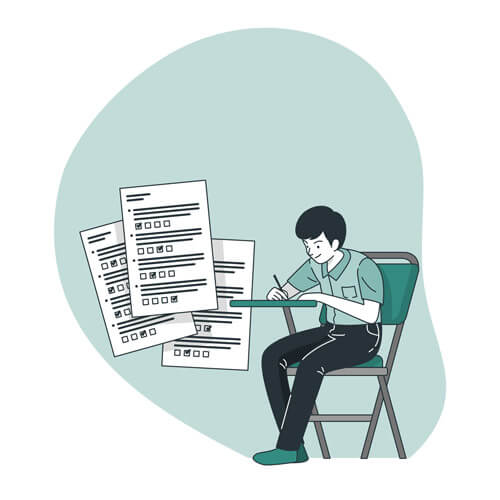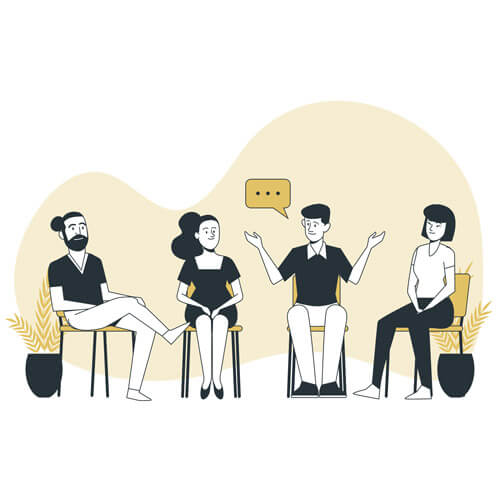The Gamification of Learning: Transforming Education through Play
In recent years, the concept of gamification has become increasingly prevalent in education. This innovative approach involves incorporating game mechanics into non-game contexts to enhance engagement and motivation. In the context of education, gamification can significantly transform the learning experience, making it more interactive and enjoyable for students. In this example we will explore the theory behind gamification, its mechanics and strategies, and also specific examples of how you could gamify learning through social interactions and visualizations using Questiory.
So, what is Gamification?
Gamification refers to the application of game-design elements and principles in non-game contexts. In education, it aims to make learning more engaging by incorporating elements such as points, badges, leaderboards, and challenges. This approach leverages the natural human desire for competition, achievement, and recognition to motivate students and enhance their learning experience.
The psychology of gamification
The effectiveness of gamification in education is deeply rooted in various psychological principles. Understanding these principles helps explain why gamification can significantly enhance motivation, engagement, and learning outcomes.
Here are some key psychological concepts that underpin gamification:
Motivation is a critical factor in learning, and gamification leverages both intrinsic and extrinsic motivators to engage students.
- Intrinsic Motivation: This type of motivation comes from within the individual. It is driven by personal interest, enjoyment, or a sense of accomplishment. Gamification taps into intrinsic motivation by making learning activities fun and rewarding in themselves, such as through engaging narratives, meaningful challenges, and opportunities for mastery.
- Extrinsic Motivation: This involves external rewards, such as points, badges, and recognition. While intrinsic motivation is ideal, extrinsic rewards can be effective in initiating engagement and encouraging persistence. Over time, these extrinsic rewards can help develop intrinsic motivation as students begin to find the learning activities themselves rewarding.
The Flow State is a psychological state where individuals are fully immersed and engaged in an activity. Gamification aims to induce this state by balancing challenge and skill.
- Challenge-Skill Balance: For flow to occur, the challenge of a task must match the learner’s skill level. If the task is too easy, it leads to boredom; if too difficult, it leads to anxiety. Gamification achieves this balance through adaptive challenges and levels, keeping learners in the optimal zone of proximal development.
- Clear Goals and Immediate Feedback: Flow is facilitated by clear objectives and immediate feedback. Gamified learning provides explicit goals (e.g., complete a quest, earn a badge) and instant feedback (e.g., points, progress bars), which helps maintain focus and motivation.
Self-Determination Theory (SDT) emphasizes the importance of autonomy, competence, and relatedness in fostering motivation.
- Autonomy: Learners need a sense of control over their learning activities. Gamification supports autonomy by offering choices, such as selecting different quests or customizing avatars, allowing students to feel ownership of their learning journey.
- Competence: Learners need to feel effective in their actions. Gamification enhances competence through progressive challenges, immediate feedback, and recognition of achievements, which help students see their growth and build confidence.
- Relatedness: Learners need to feel connected to others. Gamification fosters relatedness through social elements like leaderboards, team challenges, and collaborative projects, creating a sense of community and shared purpose.
Behavioral conditioning principles, particularly those related to reinforcement, are fundamental to gamification.
- Positive Reinforcement: Gamification uses positive reinforcement to encourage desired behaviors. For example, earning points or badges for completing tasks reinforces the behavior and increases the likelihood of its recurrence.
- Variable Ratio Reinforcement: Similar to the mechanics used in slot machines, variable ratio reinforcement schedules (where rewards are given after an unpredictable number of actions) can be particularly effective in maintaining engagement. This keeps learners excited and motivated, as they never know when the next reward will come.
Social Comparison Theory suggests that individuals determine their own social and personal worth based on how they stack up against others.
- Leaderboards and Competitions: By incorporating leaderboards and competitions, gamification leverages social comparison to motivate learners. Seeing their peers’ progress can inspire students to improve their performance and achieve higher rankings.
Key Mechanics of Gamification
Game Mechanics
Game mechanics are the building blocks of gamification, providing the structure and rules that drive engagement and interaction.
- Points and Scores: Awarding points for completing tasks or achieving milestones to motivate continued effort and participation.
- Badges and Rewards: Providing visual symbols of achievement that recognize accomplishments and serve as status symbols among peers.
- Leaderboards: Displaying rankings based on performance to foster a sense of competition and drive improvement.
- Challenges and Quests: Designing specific tasks or missions that students need to complete to progress, adding a sense of adventure and goal-oriented activity.
- Levels and Progression: Creating a hierarchical system where students advance to higher levels as they achieve more, encouraging continuous improvement.
- Feedback and Rewards: Offering immediate feedback and rewards to reinforce positive behavior and accomplishments, ensuring learners know when they are on the right track.
Behavioral Triggers
Behavioral triggers are elements that prompt specific actions or responses from learners, often based on psychological principles.
- Positive Reinforcement: Using rewards and recognition to encourage desired behaviors and actions.
- Variable Rewards: Implementing rewards that are unpredictable to keep learners engaged and excited about potential outcomes.
- Progress Monitoring: Providing visual and tangible progress indicators to keep learners motivated and focused on their goals.
- Social Influence: Leveraging peer pressure and social norms to encourage participation and achievement through group dynamics and social proof.
- Competition and Cooperation: Balancing competitive elements with opportunities for collaboration to address diverse motivational triggers among students.
Aesthetics
Aesthetics refers to the visual and sensory appeal of gamified elements, enhancing the user experience and making learning more enjoyable.
- Visual Design: Using attractive and engaging graphics, animations, and themes to capture attention and maintain interest.
- User Interface: Designing intuitive and user-friendly interfaces that make navigation and interaction seamless and enjoyable.
- Narrative and Storytelling: Incorporating compelling narratives and stories to provide context and meaning to the tasks and activities, making them more relatable and engaging.
- Emotional Design: Crafting experiences that evoke positive emotions and connections, increasing the likelihood of sustained engagement and motivation.
Game Dynamics
Game dynamics are the underlying forces that drive the flow and progression of the game, influencing how players interact with the game mechanics.
- Engagement Loops: Creating cycles of actions and rewards that keep learners engaged and returning for more.
- Flow and Pacing: Balancing the difficulty and progression of tasks to maintain an optimal challenge level, preventing boredom or frustration.
- Autonomy and Choice: Providing learners with choices and control over their learning paths, fostering a sense of ownership and intrinsic motivation.
- Goal Orientation: Setting clear, achievable goals that provide direction and purpose, helping learners stay focused and motivated.
- Social Dynamics: Encouraging interaction and collaboration among learners to build a sense of community and shared purpose.




